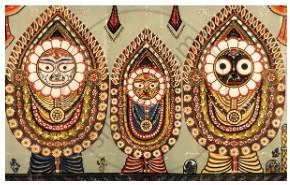Advertisements
Advertisements
Question
Answer in100-150 words
Explain with examples what historians mean by the integration of cults.
Solution
During the period of the 10th Century to the 17th Century, an important trend noticed in the religious life in India is the worship of God in many forms. Many God and Goddesses appear in the scultures and texts but they are various forms of the original deities only. These original deities are Vishnu, Shiva, and Goddesses Durga, Lakshmi and Parvati.
Historians have noticed the two marked trends in the socio-religious life of those days. The first was dissemination of the Brahminical ideas. The Brahminical texts were reproduced in simple Sanskrit. They were now made available to women and shudras, who did not have access to Brahminical literature by and large. The second was the Brahmins who were working on the beliefs and practices. It was a process of evolution, wherein traditional classical traditions were getting new shapes continuously as they were being impacted by the traditions of common people throughout the land.
Now let us look at the two of the following examples.
- A very good example of the above description is the temple of Jagannatha at Puri in Orissa. The temple is of Lord Jagannatha who is another form of Vishnu only. The word Jagannatha means one who owns the world.
- There were many local gods; their statues were often created by wood and stones by tribals. Even families began to have Kul Devata. The Goddeses were also created in wood and stone. They all were in various forms only often of Vishnu.
APPEARS IN
RELATED QUESTIONS
Study the picture and then read the following excerpt carefully and answer the question :

One of the most striking examples of this process is evident at Puri, Orissa, where the principal deity was identified, by the 12th century, as Jagannath (literally, the lord of the world), a form of Vishnu.
This picture is one of the most striking examples of: ______
Study the picture and then read the following excerpt carefully and answer the question :

One of the most striking examples of this process is evident at Puri, Orissa, where the principal deity was identified, by the 12th century, as Jagannath (literally, the lord of the world), a form of Vishnu.
Lord Jagannath is associated with: ______
Study the picture and then read the following excerpt carefully and answer the question :

One of the most striking examples of this process is evident at Puri, Orissa, where the principal deity was identified, by the 12th century, as Jagannath (literally, the lord of the world), a form of Vishnu.
Choose the correct option.
Assertion(A): Jagannath was literally the Lord of the world.
Reason(R): Lord Vishnu was worshipped in various avatars.
Study the picture and then read the following excerpt carefully and answer the question :

One of the most striking examples of this process is evident at Puri, Orissa, where the principal deity was identified, by the 12th century, as Jagannath (literally, the lord of the world), a form of Vishnu.
Consider the following statements:
a) Lord Jagannath has been depicted here with his sister Subhadra and brother Balaram.
b) Lord Jagannath has been depicted here with his wife Sita and brother Lakshman.
Choose the correct option:
Which one of the following statements regarding the Vedic tradition is incorrect?
Consider the following statements regarding the early traditions of Bhakti and select the correct ones:
- Historians draw on hagiographies of saints for knowing traditions.
- Many beliefs and practices were shaped through 'great' and 'little' Sanskritic Puranic traditions.
- Bhakti tradition was classified into two broad categories Saguna and Nirguna.
- God was worshipped with attributes in the Nirguna bhakti.
